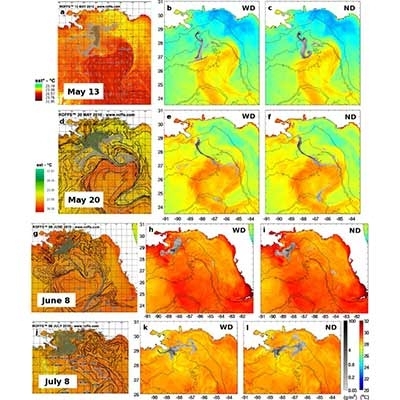
Movement of the DwH Oil Spill Patch
Surface Evolution of the Deepwater Horizon Oil Spill Patch: Combined Effects of Circulation and Wind Induced Drift
Following the Deepwater Horizon blowout, major concerns were raised about the probability that the Loop Current would entrain oil at the surface of the Gulf of Mexico toward South Florida. However, such a scenario did not materialize. Results from a modeling approach suggest that the prevailing winds, through the drift they induced at the ocean surface, played a major role in pushing the oil toward the coasts along the northern Gulf, and, in synergy with the Loop Current evolution, prevented the oil from reaching the Florida Straits. This implies that both oceanic currents and surface wind-induced drift must be taken into account for the successful forecasting of the trajectories and landfall of oil particles, even in energetic environments such as the Gulf of Mexico. Consequently, the time range of these predictions is limited to the weather forecasting range, in addition to the range set up by ocean forecasting capabilities.


